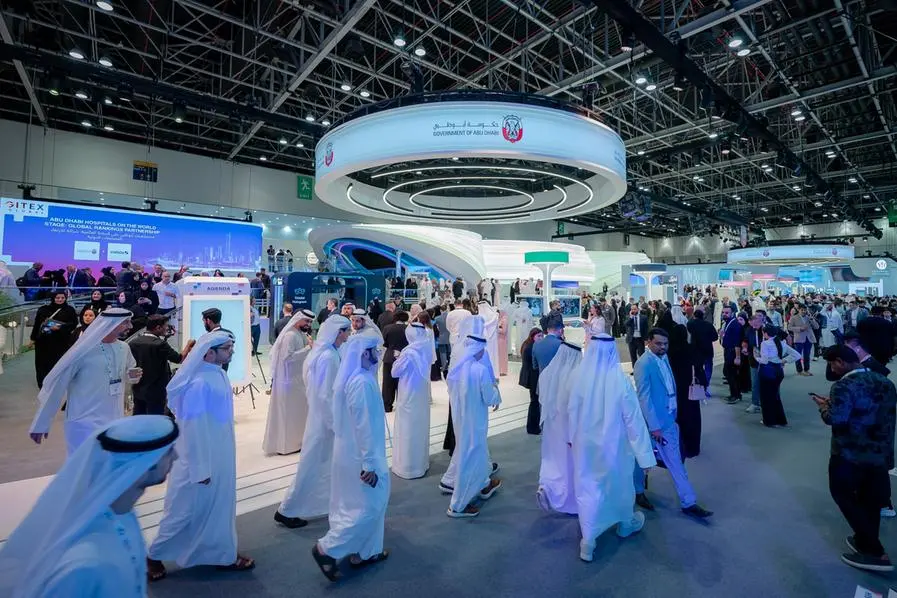In a bold stride toward innovation in public safety, the UAE’s National Emergency Authority (NEA) has unveiled a cutting-edge digital platform powered by 40 AI applications designed to revolutionize disaster and crisis management across the country. This landmark initiative aims not only to ramp up operational efficiency but also to put citizen welfare at the center of an agile, anticipatory response model.
Harnessing artificial intelligence, the new platform brings together prediction, monitoring, coordination, and communication tools under one unified system. It represents a shift from reactive crisis response to proactive crisis anticipation. With climate change, urbanization, and unpredictable events posing ever-growing risks, such a digital ecosystem could become a model for nations worldwide.
In this article, we dive into what the platform offers, how it humanizes disaster response, and why it could set new standards in safety, collaboration, and resilience.

The Vision Behind the Platform
The National Emergency Authority recognized that modern crises demand modern tools. Natural hazards, industrial accidents, and large-scale emergencies often escalate quickly, overwhelming traditional response systems. The new platform is conceived as a holistic “nerve center,” combining data, automation, and human oversight to detect threats early, coordinate action more smoothly, and communicate clearly with the public.
Rather than just responding faster once a disaster strikes, the goal is to stay one step ahead. The platform is built on four pillars:

- Predictive intelligence using AI models to forecast risks
- Real-time situational awareness via sensors, satellite data, drones
- Operational coordination tools that link agencies and responders
- Public communication modules that reach citizens promptly with clear instructions
It frames crises not merely as emergencies to be contained, but as complex systems that can be anticipated, managed, and mitigated through smart design and foresight.
What the 40 AI Apps Bring to Emergency Response
The heart of the initiative lies in the 40 AI modules, each crafted to handle specific aspects of disaster and crisis management. Rather than a one-size-fits-all, the modular architecture allows flexibility, scale, and specialization. Below are some of the key capabilities:
Predictive & Early Warning Apps
These modules analyze environmental data (weather patterns, seismic activity, flood sensors) to forecast risks—such as flash floods, storms, or earthquakes—days or even hours in advance. Alerts can be generated and escalated automatically, giving authorities extra lead time to mobilize resources.
Risk Assessment & Vulnerability Mapping
By combining demographic, infrastructure, and historical data, these apps help map where vulnerabilities lie—such as flood-prone neighborhoods, densely populated zones, or critical infrastructure at risk—so that interventions can be prioritized smartly.
Decision Support & Scenario Simulation
Command centers can use simulation tools to run “what if” scenarios—e.g. if a dam breaks, or a fire spreads—to test response plans, optimize resource allocation, and train staff under realistic conditions.
Resource & Logistics Management
Some AI apps oversee the positioning, dispatch, and status monitoring of emergency personnel, vehicles, medical supplies, shelters, and relief goods. They help avoid duplication, bottlenecks, or misallocation.
Real-Time Monitoring & Drone Integration
Through integration with drones, sensors, IoT platforms, and satellite feeds, these apps provide live visuals and data feeds from disaster zones, enabling informed decision making without sending responders blindly into danger.
Communication & Public Alert Modules
Translation, text generation, broadcasting, and targeted notifications are handled by specialized AI tools that deliver timely instructions to communities via mobile alerts, social media, digital boards, and web portals.
Post-Crisis Analytics & Learning
Following an event, the system uses AI to analyze what worked, where delays occurred, and how resources were used. These insights feed back into planning, making future response smarter and more adaptive.
Because each app is part of a unified framework, data flows seamlessly across modules: prediction outputs feed into dispatch apps; monitoring updates refine risk maps; public communication is informed by real-time status. This integrated design boosts accuracy, speed, and coherence across agencies.
Humanizing the Tech: People at the Core
While the platform is technological, its impact is deeply human. Its design reflects a commitment to making crises feel less chaotic for citizens and less overwhelming for responders.
Empowering Frontline Responders
AI tools don’t replace responders—they support them. By automating repetitive tasks, filtering noise, and offering decision support, the system frees emergency personnel to focus on critical actions: saving lives, coordinating in the field, and maintaining human contact.
Transparent Communication with Citizens
When disaster strikes, fear often stems from uncertainty. The platform’s public modules aim to give people clear, credible, and timely information—what to do, where to go, which services are available—reducing panic and misinformation.
Inclusivity and Accessibility
The communication apps can adapt messages to different languages, literacy levels, and formats (text, audio, visuals) so vulnerable communities aren’t left behind. This human-centric approach ensures that all citizens benefit, not just those digitally fluent.
Learning Together
A post-crisis review is not just statistical; it is participatory. Residents affected by events can provide feedback, report issues, or highlight overlooked gaps. This two-way loop nurtures trust, accountability, and continuous improvement.
Why This Platform Matters (and Why It Matters Now)
Escalating Threats & Complexity
With climate change leading to intensifying storms, floods, heatwaves, and rising sea levels, nations globally face mounting risks. Cities are growing denser, infrastructure more interconnected, and emergencies more unpredictable. Traditional systems are straining. The UAE’s move acknowledges that tomorrow’s disasters demand data, speed, and system thinking.
Scaling National Resilience
A centralized digital backbone ensures consistent protocols, better interagency collaboration, and avoidance of redundant silos. It helps scale response across emirates, cities, and districts with agility.
Boosting Trust in Governance
When authorities act swiftly, transparently, and intelligently, public trust rises. A platform that communicates clearly and acts decisively fosters confidence in institutions and collective security.
Showcasing Technological Leadership
Launching a 40-app AI ecosystem positions the UAE as a regional and global leader in leveraging technology for public good. Other nations may look to replicate or adapt this model—potentially boosting technological diplomacy and partnerships.
Challenges & Considerations
Data Privacy & Security
With vast volumes of citizen, sensor, and infrastructure data flowing through the system, safeguarding privacy and securing against cyberattacks are critical. Robust encryption, access controls, and oversight mechanisms must be built in.
Interagency Cooperation
50+ government departments and agencies may need to operate on this shared platform. Aligning processes, training, data standards, and decision protocols is crucial to avoid friction and duplication.
AI Bias & Model Transparency
Algorithms may reflect biases or blind spots. Ensuring transparency, auditability, and continual validation is essential to maintain fairness, especially in life-and-death decisions.
Technical Infrastructure in Remote Areas
Rural or underdeveloped areas may lack robust connectivity, sensor networks, or power—potentially limiting real-time integration. Bridging these gaps will require investment.
Public Adoption & Trust
For public communication modules to work, citizens must trust and rely on alerts and instructions. Overalerting or false alarms can erode confidence. Calibration, reliability, and credibility are vital.

Vision: What Transformation Might Look Like
Imagine a scenario: a sudden flash flood threatens suburban zones. The predictive AI module registers rising water levels upstream and sends early alerts. Emergency planning apps simulate potential flood paths, identify vulnerable neighborhoods, and dispatch rescue teams optimally. Drones send live feeds, while public modules send local residents messages—“Move to higher ground. Nearest shelter: X. Route closed at Y.” After the event, the post-crisis analytics show response gaps; city officials adapt infrastructure and update protocols accordingly.
In such a world, disasters don’t feel like chaotic shocks but orchestrated responses undergirded by data, foresight, and human care.
Over time, this platform could evolve to integrate emerging innovations—AR (augmented reality) support for responders, predictive health analytics in pandemics, crowdsourced citizen reporting, and global collaboration modules for transboundary crises.
Moving Forward: Recommendations & Strategic Priorities
To turn potential into lasting impact, here are key strategic priorities:
- Invest in training and cultural change: Technology alone won’t transform outcomes—humans must adapt. Training, simulations, and leadership buy-in are essential.
- Ensure transparency and oversight: Open audit trails, governance committees, and third-party evaluation can build trust.
- Expand infrastructure in underserved areas: Equitable connectivity and sensor networks must reach every community.
- Foster public engagement: Civic education, drills, community feedback forums, and local partnerships will anchor the platform in lived reality.
- Iterate & evolve: The system should not be static. Continuous updates, real-world feedback loops, and incorporation of new technologies will keep it resilient to changing threats.
Conclusion
The UAE National Emergency Authority’s platform, powered by 40 AI apps, marks a landmark leap in how societies can manage disasters and crises. By uniting predictive intelligence, real-time monitoring, operational coordination, and citizen communication in one ecosystem, it raises the bar on what proactive, human-centered resilience can look like.
While challenges remain—data ethics, interoperability, infrastructure, and public trust—the ambition is clear: to pivot from reacting to crises to anticipating, orchestrating, and learning from them. As the platform matures, it may well become a blueprint for nations worldwide seeking smarter, more humane crisis response in an uncertain age.
Do follow UAE Stories on Instagram
Read Next – BEEAH and Hashgraph Unite to Launch Empowering Identity Ecosystem















